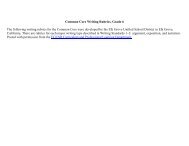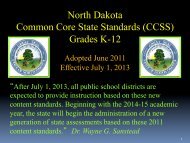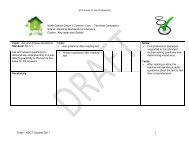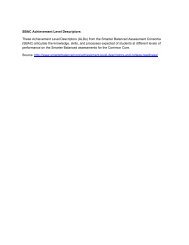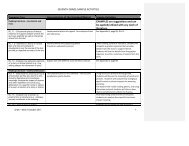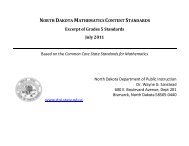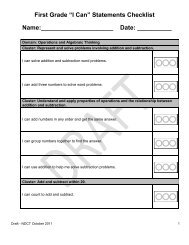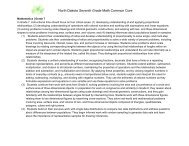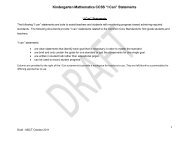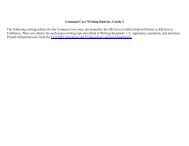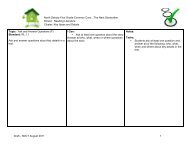Sample Scope and Sequence Chart - ND Curriculum Initiative
Sample Scope and Sequence Chart - ND Curriculum Initiative
Sample Scope and Sequence Chart - ND Curriculum Initiative
You also want an ePaper? Increase the reach of your titles
YUMPU automatically turns print PDFs into web optimized ePapers that Google loves.
North Dakota Collaboration for Excellence Series<br />
H<strong>and</strong>book 3: Evaluating the <strong>Curriculum</strong><br />
Display 3-7:<br />
Unit Analysis Form Example<br />
1. List the terms taught.<br />
! natural resource, renewable resource, pollution, environment, conservation, water treatment plant, sewage<br />
treatment plant, phosphate, algae, solar energy<br />
2. List the facts <strong>and</strong> information taught.<br />
! Environmental Protection Agency is a government agency that monitors compliance with laws<br />
! Taking a shower uses 95 liters of water; taking a bath uses 133 liters<br />
! The manufacture of plastics requires the use of strong chemicals <strong>and</strong> high temperatures<br />
! Between 1980 <strong>and</strong> 1985 the world population increased by about 550 million people<br />
3. List the big ideas taught.<br />
! The water cycle<br />
! Acid rain<br />
4. List the skills <strong>and</strong> processes taught.<br />
! Interpret a table of data<br />
! Identify common causes of air pollution<br />
5. List the critical thinking <strong>and</strong> problem-solving skills taught.<br />
! Analyze the trade-off involved in requiring factories to reduce pollution--cleaner air results in higher prices<br />
for the consumer<br />
! Explain how one person can make a difference in conservation<br />
The unit analysis form can be distributed to students to help them prepare for the test; it can also be used by the<br />
teacher as a means of guiding the review work.<br />
(5) Write the test items.<br />
-- The information collected thus far is now used to write test items. The teacher first<br />
determines the type of questions to be used for each objective, weighing both issues<br />
of validity (which type will most validly assess learning) <strong>and</strong> utility (which type<br />
will be easiest to score). Display 3-8 lists the advantages <strong>and</strong> disadvantages of the<br />
various item types.<br />
North Dakota Department of Public Instruction - 8/1/00 12



